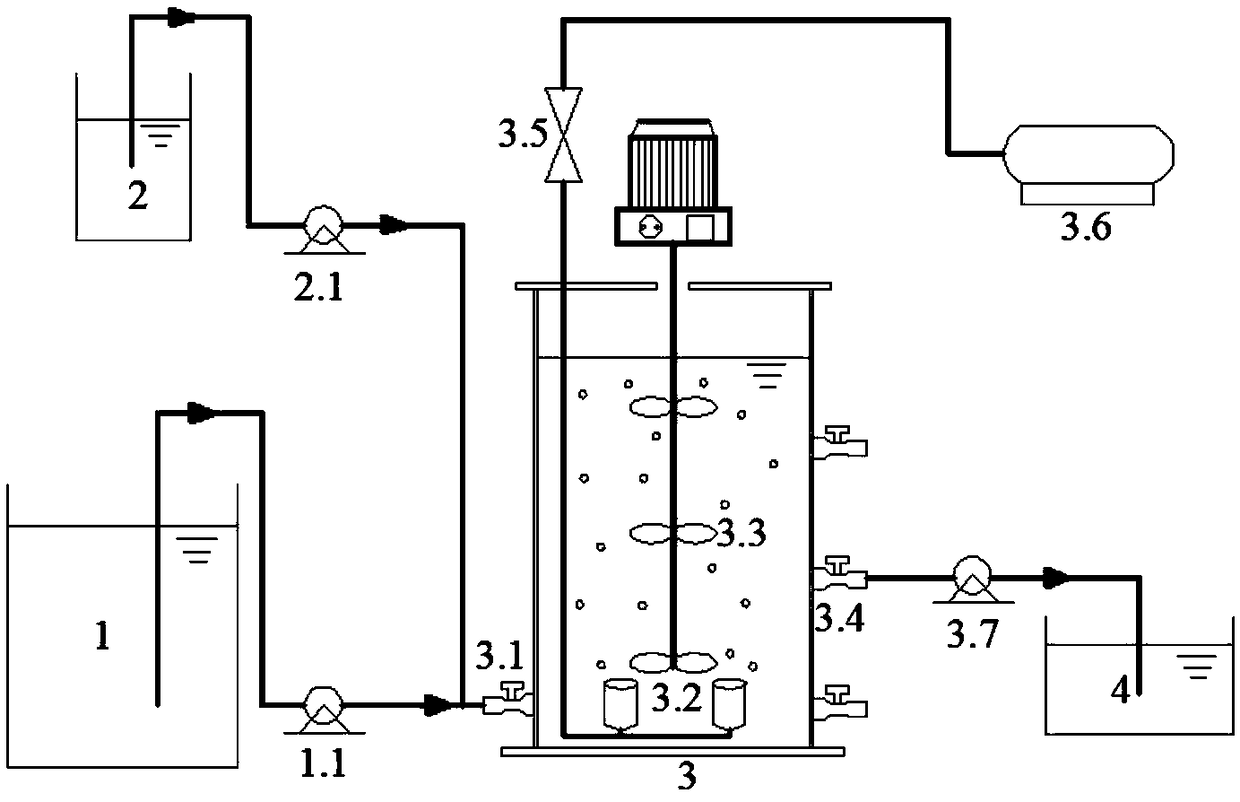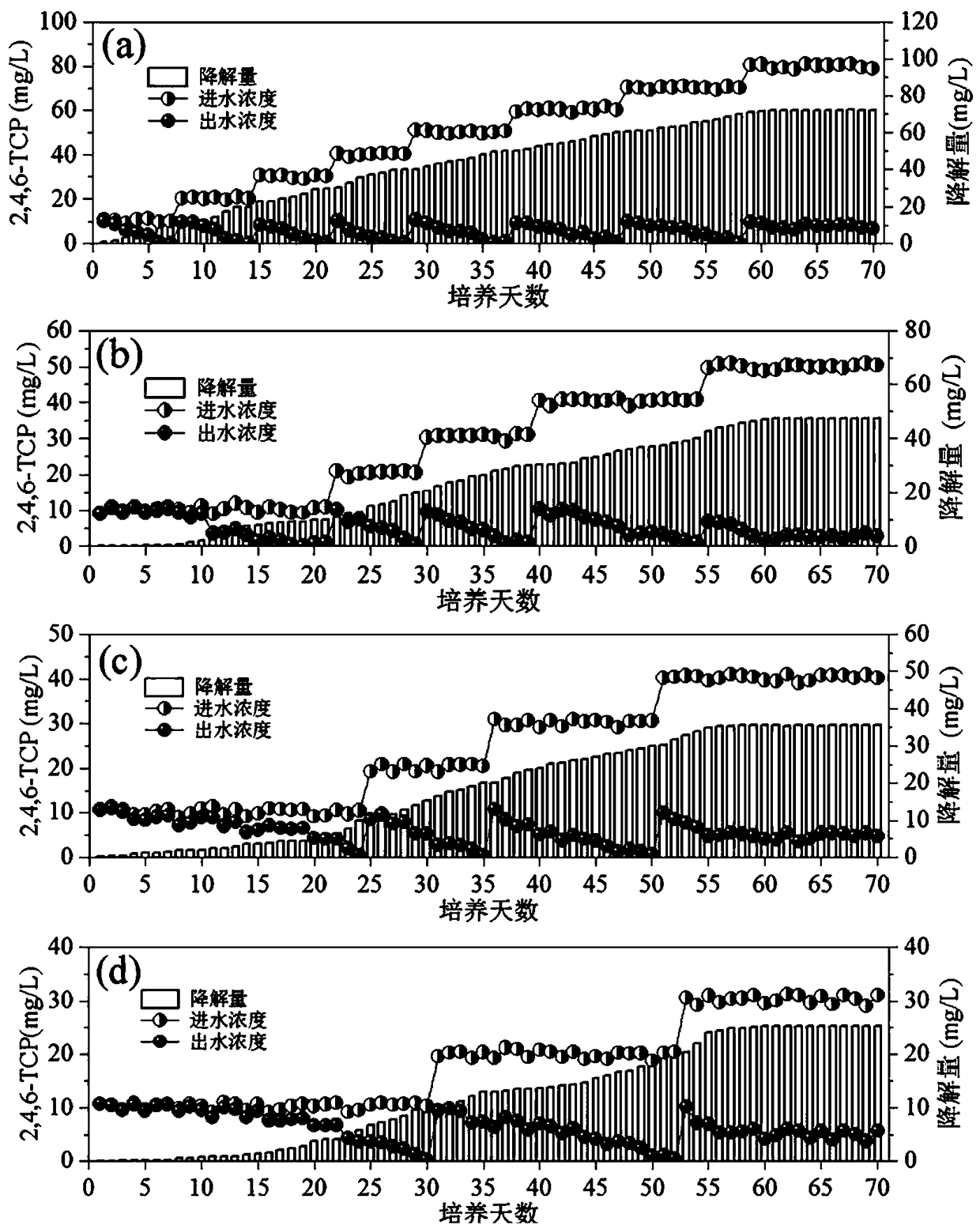Method for quickly acclimating microorganism capable of degrading 2,4,6-trichlorophenol
A technology of trichlorophenol and microorganisms, which is applied in the field of microorganisms that quickly domesticate and degrade 2,4,6-trichlorophenol, can solve the problems of long start-up time and insufficient degradation ability, and achieve fast domestication speed, large degradation amount, and reduced The effect of hydraulic retention time
- Summary
- Abstract
- Description
- Claims
- Application Information
AI Technical Summary
Problems solved by technology
Method used
Image
Examples
Embodiment 1
[0026] 1) Start the SBR reactor: The inoculated sludge of this system is the sludge from the secondary sedimentation tank of the urban sewage treatment plant. After inoculation, the sludge concentration of the SBR reactor is maintained between 4000 and 5000 mg / L.
[0027] 2) The runtime adjustment operation is as follows:
[0028] 2.1) The first stage: 0 to 36 days, the domestication system only introduces the distribution water containing 2,4,6-trichlorophenol, and 2,4,6-trichlorophenol is dosed according to the gradient concentration, that is, from 10mg / L Increase to 80mg / L in turn. After adding each concentration, no 2, 4, 6 trichlorophenols can be detected in the effluent until the degradation of microbial p-chlorophenols reaches the maximum, indicating that the first stage of domestication is completed; the second stage: 36 ~40 days, while maintaining the water inflow in the first stage, start to introduce sucrose to match the water, the sucrose concentration is 268mg / L, ...
Embodiment 2
[0033] The difference between this embodiment and Example 1 is that the concentration of sucrose in the influent is 357 mg / L. The degradation of 2,4,6-trichlorophenol and 2,4,6-trichlorophenol in the influent and effluent were detected respectively. The result is as figure 2 As shown in (b), after stable operation, the degradation amount of 2,4,6-trichlorophenol is 47mg / L.
Embodiment 3
[0035] The difference between this embodiment and Example 1 is that the concentration of sucrose in the influent is 447 mg / L. The degradation of 2,4,6-trichlorophenol and 2,4,6-trichlorophenol in the influent and effluent were detected respectively. The result is as figure 2 As shown in (c), after stable operation, the degradation amount of 2,4,6-trichlorophenol is 35mg / L.
PUM
 Login to View More
Login to View More Abstract
Description
Claims
Application Information
 Login to View More
Login to View More - R&D
- Intellectual Property
- Life Sciences
- Materials
- Tech Scout
- Unparalleled Data Quality
- Higher Quality Content
- 60% Fewer Hallucinations
Browse by: Latest US Patents, China's latest patents, Technical Efficacy Thesaurus, Application Domain, Technology Topic, Popular Technical Reports.
© 2025 PatSnap. All rights reserved.Legal|Privacy policy|Modern Slavery Act Transparency Statement|Sitemap|About US| Contact US: help@patsnap.com


